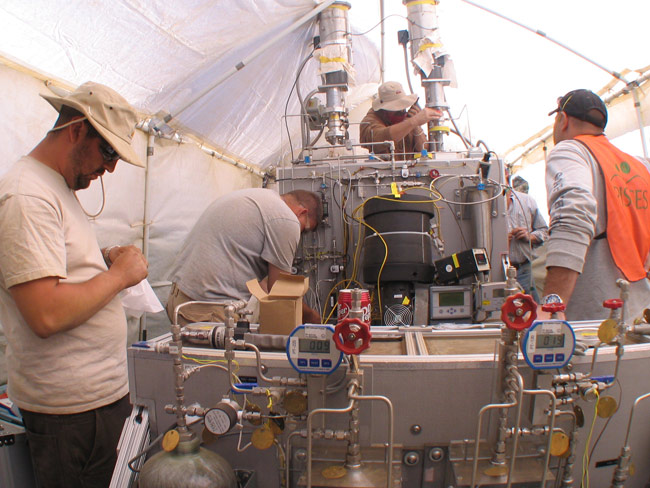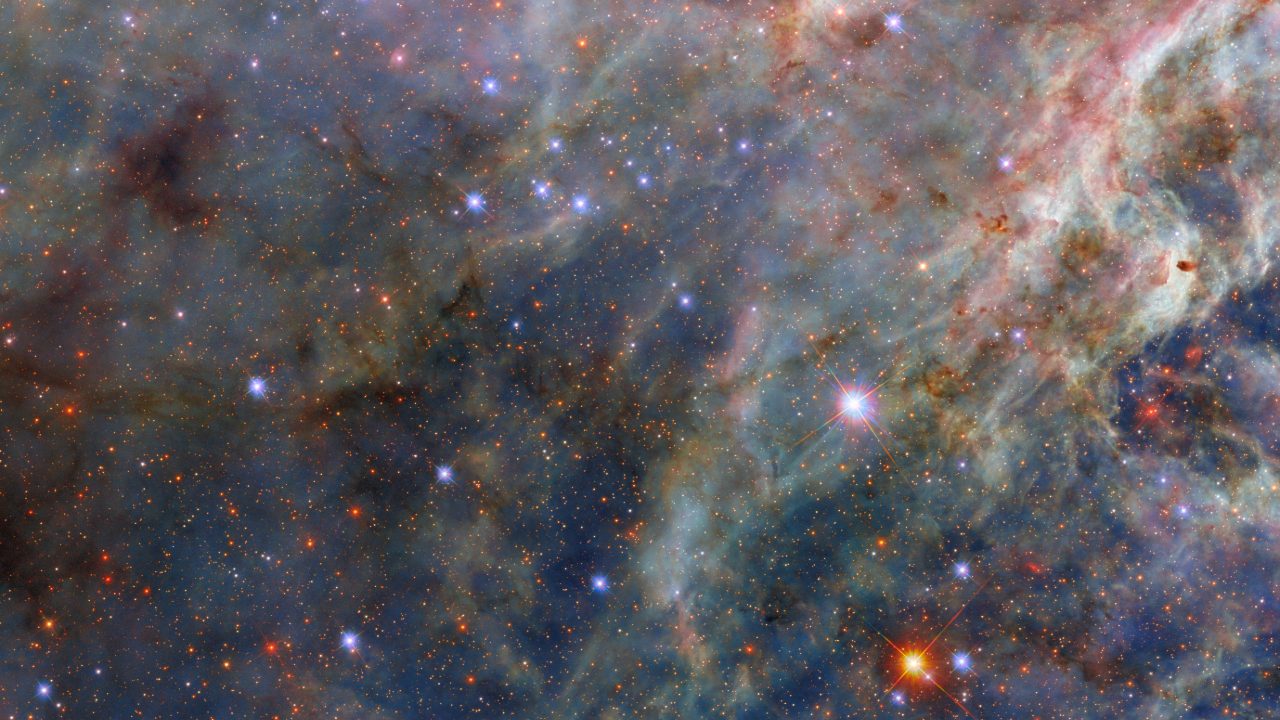How NASA Hopes to Mine Water on the Moon

NASA has long planned to mine water on the moon to supply human colonies and future space exploration. Now the discovery of small amounts of water across much of the lunar surface has shifted that vision into fast-forward, with the U.S. space agency pursuing several promising technologies.
A hydrogen reduction plant and lunar rover prospectors have already passed field tests on Hawaii's volcanic soil, and more radical microwave technology has shown that it may be used to extract underground water ice. Water mined by these methods could not only keep astronauts supplied with a drink, but may also provide oxygen and fuel for lunar missions.
"You can make back costs fairly quickly compared to the launch costs of just throwing tanks of water and oxygen at the moon," said GeraldSanders, manager of NASA's In-Situ Resource Utilization Project. He pointed to a cost-analysis study conducted by the NASA Ames Research Center in California that suggested such extraction technologies could pay for themselves within a year.
Still, Sanders cautioned that big unknowns must be conquered before NASA engineers can go prospecting for lunar water. They need to know how much water the moon holds, where it is, and how deep they have to excavate.
One probe, NASA?s LCROSS spacecraft, is closing in on the moon?s south pole and is expected to crash into a crater on Oct. 9 in another bid to find water ice hidden within the permanent shadows there.
Not just half-baked
NASA scientists have quietly worked on water mining technologies for years in small laboratories. But a full-blown program did not emerge until the latest vision for living off the land and using lunar resources emerged in2004.
Breaking space news, the latest updates on rocket launches, skywatching events and more!
One promising technology takes advantage of the chemistry of the moon dirt - or regolith - by adding hydrogen, which then reacts with iron oxide in the moon dirt to produce water. Such hydrogen reduction reactors heat the regolith to about 1,832 degrees Fahrenheit (1,000 degrees Celsius) so that the proper chemical reactions can occur.
A process known as electrolysis can then split the extracted water into pure hydrogen and oxygen, either for rocket fuel or astronaut air supplies.
NASA has already tested a hydrogen reduction reactor on Hawaii's MaunaKea Volcano. During a year-long operation, it produced 1,455 pounds (660 kg) of oxygen from a rocky soil containing 5 percent iron oxide. Now engineers have a second-generation system in the works that can produce 2,205 pounds (1,000 kg).
Several different rovers and mining drills have also cut their teeth in Hawaiian field tests, and demonstrated how future missions could excavate water from lunar regolith or underground ice pockets.
"You basically have a small chamber on a rover, and the rover scoops regolith into the heating chamber," Sanders told SPACE.com. He compared it to the oven technology previously used on NASA's Phoenix MarsLander, except that the Phoenix oven represented a one-time use device. A reusable lunar reactor would require airtight valves that could open and close over many times over several years.
But engineers remain unsure about whether to dig up material and bring it back to a central processing plant, or if rovers should simply carry the processing technology. One serious consideration comes from whether weakly held water in the regolith might get lost during lunar excavations, researchers said.
Microwave the moon
Beyond ovens, NASA has also looked at microwaves to mine moon water. Tests on simulated lunar permafrost have shown that beamed microwaves can vaporize 98 percent of water ice, and capture 99 percent of the extracted water in gas form - all without the need for drilling or digging in frigid conditions where water ice might become as solid as granite.
Microwave technology remains in its infancy, but could have"significant energy savings" compared to digging up and heating huge masses of regolith, Sanders said.
Testing such technology is expensive, even in Earth laboratories. But computer modeling has helped calculate how different microwaves get absorbed by different types of lunar regolith, said Edwin Ethridge, a materials scientist at NASA's Marshall Space Flight Center at Huntsville, Ala.
"We don't know the ideal microwave frequencies necessarily,"Ethridge explained. "It depends on where the water is and how concentrated it is."
The amount of iron within lunar regolith also changes how much microwaves get absorbed, and it's not the same across the moon's surface.Apollo astronauts brought back samples from the lunar plains, but NASA scientists suspect that much water ice could lie hidden within the highlands and regions near the lunar poles.
Ethridge and his colleagues hope to eventually get their hands on more real lunar samples. But for now they have several variants of simulated lunar dirt that represent different parts of the moon.
Moon, Mars or bust
Whatever the method, water-mining technology may prove ready sooner thanNASA can return to the moon. The agency hopes to send astronauts back to the moon by the 2020s, but uncertainty over the manned Constellation program and the agency's future weighs heavily on the funding for these efforts, and how soon they might deploy.
Much also hinges on the fast-approaching LCROSS mission that aims to crash into the moon with two impactors. That could tell scientists how much more water ice lies hidden within craters near the lunar poles, and help fill in some of the unknowns.
"The first step in all of this is basically to understand the concentrations of [available] water, how much energy it takes to dig up, and how much energy is required to drive off volatiles," Sanders said.
Budgetary and scientific uncertainties aside, both Sanders and Ethridge remain confident that extracting water from the moon represents a winning path forNASA.
"I don't see how it could not be cost-effective to extract water from the moon to refuel space payloads in lunar orbit," Ethridge noted. "If we have a lunar outpost with humans, the most logical thing would be having a facility to extract water."
Such technologies should serve NASA well beyond the moon as well. Fresh impact craters on Mars have revealed ice beneath the red planet's surface - a tantalizing hint of what humans hope to find closer to home.
Jeremy Hsu is science writer based in New York City whose work has appeared in Scientific American, Discovery Magazine, Backchannel, Wired.com and IEEE Spectrum, among others. He joined the Space.com and Live Science teams in 2010 as a Senior Writer and is currently the Editor-in-Chief of Indicate Media. Jeremy studied history and sociology of science at the University of Pennsylvania, and earned a master's degree in journalism from the NYU Science, Health and Environmental Reporting Program. You can find Jeremy's latest project on Twitter.
